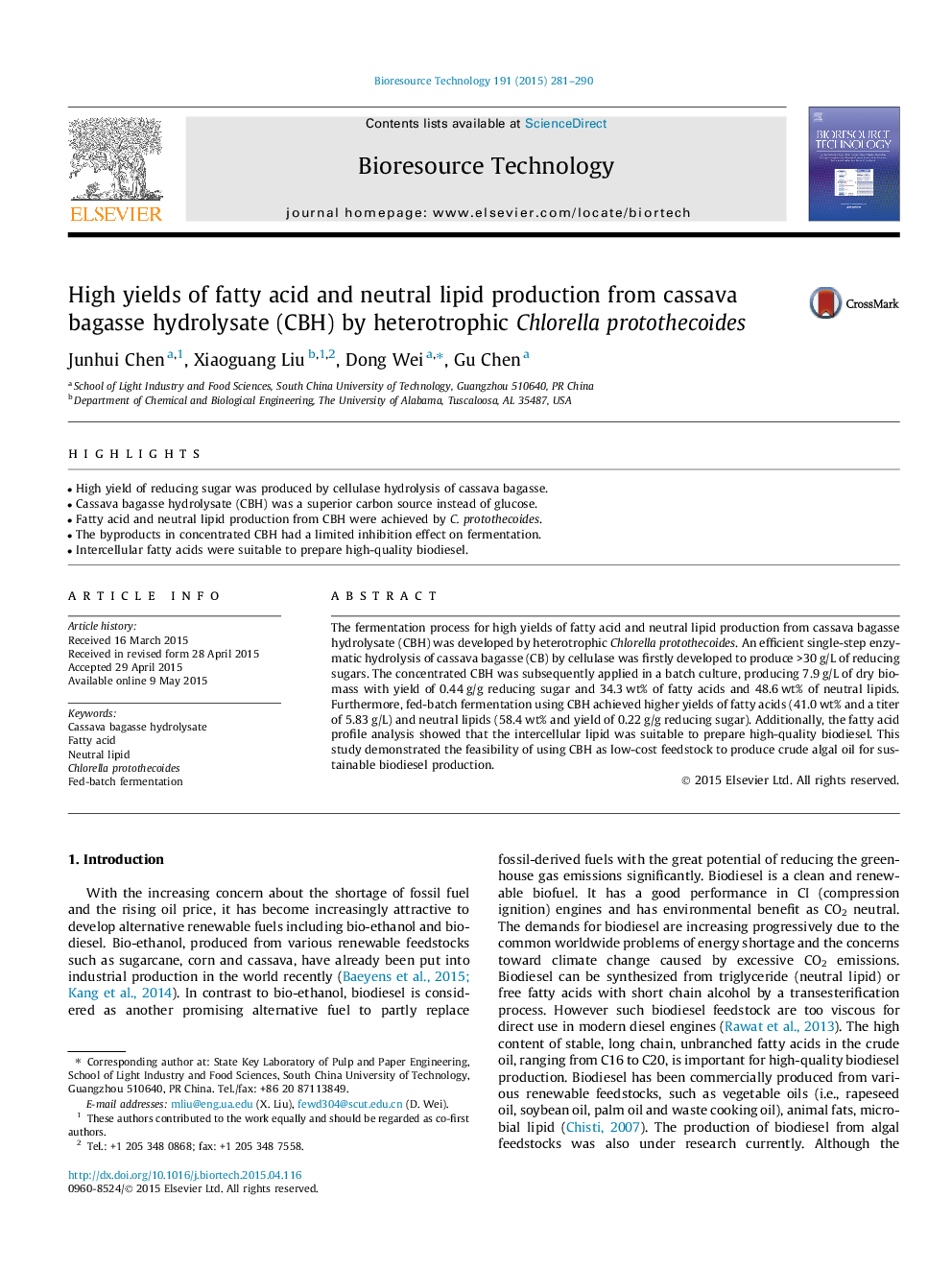| Article ID | Journal | Published Year | Pages | File Type |
|---|---|---|---|---|
| 679590 | Bioresource Technology | 2015 | 10 Pages |
•High yield of reducing sugar was produced by cellulase hydrolysis of cassava bagasse.•Cassava bagasse hydrolysate (CBH) was a superior carbon source instead of glucose.•Fatty acid and neutral lipid production from CBH were achieved by C. protothecoides.•The byproducts in concentrated CBH had a limited inhibition effect on fermentation.•Intercellular fatty acids were suitable to prepare high-quality biodiesel.
The fermentation process for high yields of fatty acid and neutral lipid production from cassava bagasse hydrolysate (CBH) was developed by heterotrophic Chlorella protothecoides. An efficient single-step enzymatic hydrolysis of cassava bagasse (CB) by cellulase was firstly developed to produce >30 g/L of reducing sugars. The concentrated CBH was subsequently applied in a batch culture, producing 7.9 g/L of dry biomass with yield of 0.44 g/g reducing sugar and 34.3 wt% of fatty acids and 48.6 wt% of neutral lipids. Furthermore, fed-batch fermentation using CBH achieved higher yields of fatty acids (41.0 wt% and a titer of 5.83 g/L) and neutral lipids (58.4 wt% and yield of 0.22 g/g reducing sugar). Additionally, the fatty acid profile analysis showed that the intercellular lipid was suitable to prepare high-quality biodiesel. This study demonstrated the feasibility of using CBH as low-cost feedstock to produce crude algal oil for sustainable biodiesel production.
